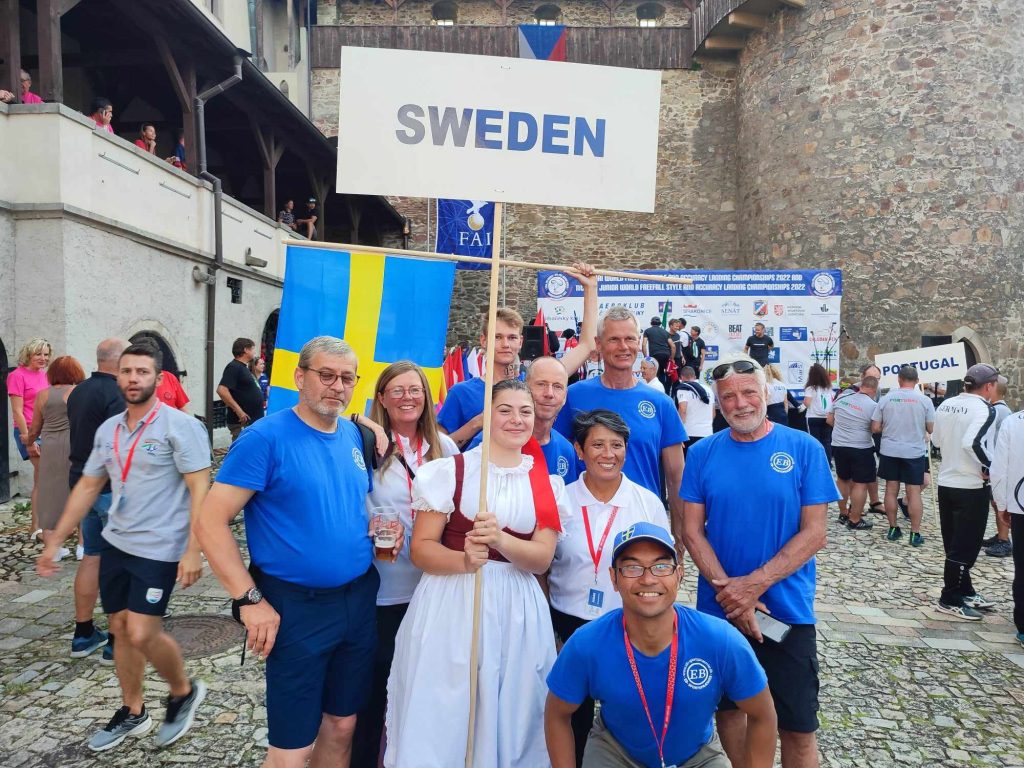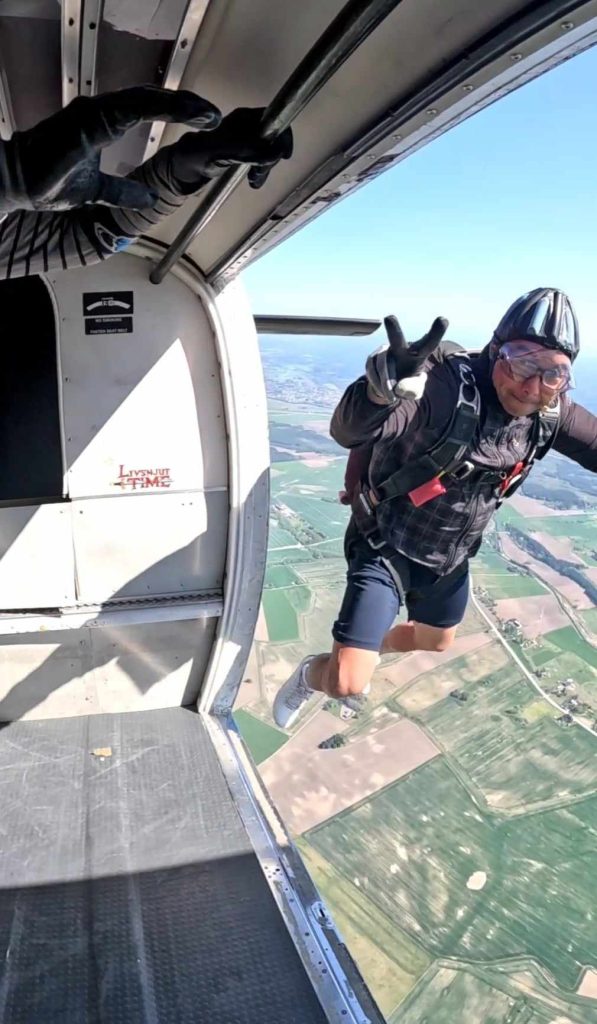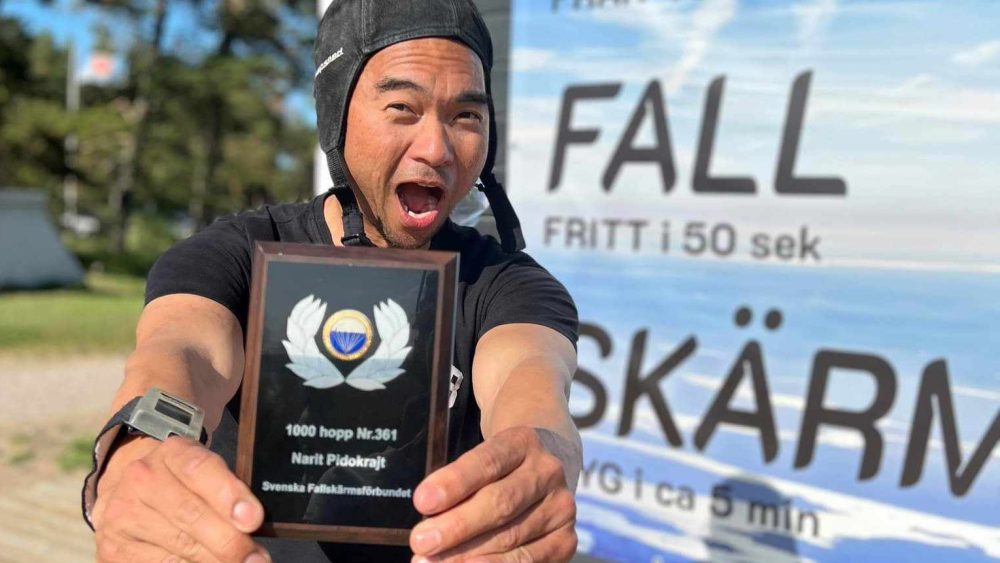Hi Narit! You graduated from the master’s degree programme in Physics in 2002. What have you been up to since your graduation?

A long story short, I went on to get a PhD in theoretical physics (black hole physics) from Stockholm University in October 2009. This wouldn’t have happened if I didn’t take the course general relativity (Einstein’s physics of gravity) in Lund and got the best grade! My master’s degree in Lund was in the field of solid state physics. After my PhD I did a bit more of research on black holes. In 2012 I was recruited to teach at a high school and that was something I did until summer 2020 before I re-entered the higher education sector, first at University of Skövde then the University of Borås, where I have been teaching mostly basår (preparatory year in math and physics) and a bit of engineering students.
Along the way I was also involved in sports and sports administration at local, national and international levels. The most memorable moment was when I was a part of the Swedish delegation to the IOC meeting during the summer of 2019. It was Italy that won the bid to host the winter Olympic games 2026. I had chats and handshakes with many well-known names in sports, Crown Princess Victoria and the then Prime Minister.

I remember vividly the coffee break standing with a coffee cup in my hand with Prince Albert of Monaco who curiously asked me about my background. My answer was simple: “skydiving as a sport and teaching physics as a career”. As of today, I am part of the Swedish delegations to two FAI (World Airsports Confederation) commissions; one is the general airsports and the other one is the commission for aeronautic records. I have done skydiving in 9 countries so far. The first and the only international skydiving competition I will attend this year is in Germany in September.

The thrilling sport of skydiving seems to be an interest close to your heart. You have done over 1100 skydive jumps and hold two Swedish national records. Tell us more about how you found your passion for skydiving!
I was introduced to the sport of skydiving in May 2012 in Västerås when I went tandem skydiving after I was challenged by a student in my physics class who said to me that I could never be sure how it feels in the free fall until I have done it myself. It was when we had a physics lesson on gravity using skydiving as an example. In other words, the student was not happy enough with the Youtube videos that I showed. Fortunately, the skydiving club in Västerås gave me the video for free since it was for educational purposes. I did show it to the class and the students were super thrilled that I really took up the challenge. I was very nervous prior to the jump. It was an overwhelming sensation and I was sold to the idea that I should be a skydiver myself.
I passed my skydiving examination on the National Day in 2013. The national records are in team accuracy, accomplished in Denmark in 2019, and the Czech Republic in 2022, when I was a part of the Swedish national team to world’s championships in accuracy parachuting. I see skydiving as a challenging sport/adventure demanding me to think and act/react logically, analytically and decisively. It is basically about trusting your ability to handle uncertainties and unknowns. It is also about getting a dosage of adrenaline, dopamine and serotonin, which according to health experts is a very good thing. I once applied to be an ESA astronaut. In one of the text fields, you can write about your special talents (with suggestive words: mountain climbing, skydiving, scuba diving, something like that). It seems that quite a few astronauts have done skydiving, including the newest Swedish astronaut who has a background in parachuting.

I would also like to mention that the social part of skydiving is important. You are a part of a big family. Skydivers come from all walks of life: politicians, professors, police officers, doctors, nurses, fire fighters, lawyers, teachers, electricians, IT experts, architects, entrepreneurs, university students, you name it. I remember trying to find and locate the buildings I once lived in as an LU student while we were flying a few hundred meters over Lund to Malmö for a demonstration jump on the National Day 2022 with my fellow skydivers from Skydive Skåne in Kristianstad, which is my home club since 2018.
You have been able to combine your interest in skydiving with your research in physics, tell us more about it!
I always insert skydiving into my physics teaching since it is a natural part of discussion on gravity, air resistance and mathematical methods used in addressing them. Skydiving is a perfect example of how different forces come into play. At a high school level you have to simplify a great deal (like no air resistance at all!). At a university level you can add more math and a bigger scope of problem solving. I am particularly interested in a so-called speed skydiving, which is a young sport. Sweden has been successful in this sport discipline as a matter of fact. It is, to me, a space-age sport where a human body encounters 500+ km/h in free fall. No other species on Earth can dive through Earth’s atmosphere as fast as this! It is the fastest non-motorized sport for mankind – it incorporates both theoretical and practical know-hows while we are pushing the limits. I can also add that I am driven by thoughts of exploring new frontiers.
Skydiving today is far more advanced than it was for 40 years ago, like in aviation. I do not practice speed skydiving but I wrote a paper on this. It was the first physics paper on speed skydiving. The paper was cited and I also got a phone call from a journalist in the United States to give some explanation. In fact, this makes me remember the topic I chose for my PhD thesis. My first paper on black holes as a part of my PhD thesis is cited over 200 times to date, but it took some years before someone found the use of it. So I hope that my paper on speed skydiving will find more readers in the future. I simply like exploring unfamiliar areas/things/ideas!

Do you apply the laws of physics onto your skydive jump? If so, how?
It is indeed a secret … he he. Just joking! Yes, I do apply my theoretical understanding of gravity, wind directions, angles of attack and how thermal winds work when I fly my parachutes to a designated target. But to be good at it you have to practice and repeat. In many sports it is important to have a correct understanding of the underlying theory (how everything works) but it boils down to “practice makes perfect” that takes one to the next level.
Thankfully physics helped me directly when I was learning parachute flying for the first time. I remember having to explain to comrade skydivers the concept of cross winds, ground speeds and wind speeds. All these are basically vectors used in physics. This is probably why I learned accuracy landing quickly, and instantly picked up this discipline as my new sport. It is the sport that demands immense concentration, especially in the last portion of the jump when you have to hit a target 2 cm in size.
What thoughts run through your head just before a jump?
A wide variety of thoughts I would say. I remember thinking about a math problem I could not solve while the plane was taxing to the runway or about phone calls to make the next day, etc. But most of my thoughts prior to a jump are skydiving-related like different procedures to follow during the jump or what I anticipate to happen (like thermal winds, clouds, turbulent cross winds at the landing site).
When I do a demonstration jump I would visualize the landing site and the flying patterns and potential hazards (power lines, trees, etc) and spectators. You have to make sure to commit zero error during such a performance. During competitions you also have to think about aerial separations from your team members. However, most skydivers would agree that we do not worry about things while engaging in the activity of skydiving. We are just fully focused on the skydiving and what comes with it. You might have heard that skydiving gives mixed and intense positive emotions that you will hardly feel in another activity.
Where do you see yourself in five years?
First of all, I hope that within five years from now, I will do at least one skydive over Lund. That would be absolutely awesome! It would also be awesome if I can engage more in research on sport sciences/technologies.
Ultimately, I would one day like to use my background in the education/research/sport sectors and experience in intercultural communications and organizational works as a leader/consultant for national/international organizations. There are published papers on leadership and parachuting suggesting that people with a skydiving/parachuting background can be good and effective at leading since they are used to handling unknowns with self-efficacy. Skydiving also trains one to be self-assured, persevere and take calculated risks.

My first year in Lund was an eye-opener for intercultural communications. I became interested in learning about different cultures. My time in Lund in the international environment was a perfect preparation for my work, my life and my perspectives of the world today.

